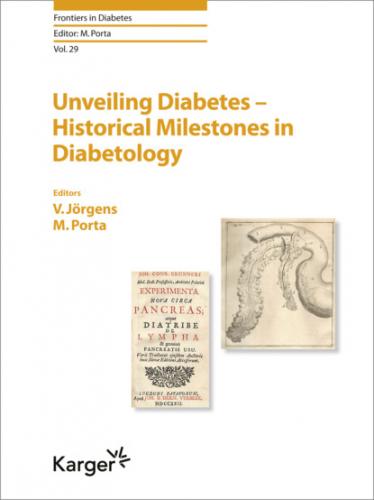On June 13, 1885, the couple married in Berlin – a great wedding celebration for two distinguished families. It was probably the happiest time of his life. First the two undertook a honeymoon trip through Germany. Then, in Madeira they rented a spacious villa, employed a caretaker couple, a governess for the daughter, and other house staff. In the same year as his wedding, Langerhans also published a manual for Madeira (Fig. 6). It contained maps of the island and the capital Funchal. The history, flora, and fauna of the autonomous Portuguese region are described in detail. The manual also contained many hints for tuberculosis patients as well as a complete list of all 93 quintas which were offered for rent on the island at the time. Even the Merian booklet, published in 1969, mentions that there is no better book on Madeira as the one written by Langerhans [7].
Fig. 7. Paul and Margarethe Langerhans and Frieda Ebart in Funchal, 1886 [9].
Fig. 8. The Quinta Lambert in Funchal, the last home of the Langerhans family [9].
In 1886 Paul’s state of health deteriorated. Together, he and Margarethe decided to move from their house situated in the middle of the city to the seaside (Fig. 7). They chose the most beautiful villa in Funchal: the Quinta Lambert in the Rua da Imperatriz Amalia (Fig. 8). It was enthroned in a large park above the harbor. With an outlandish annual rent of 400 pounds it was the most expensive property on the whole island. Although initially only planned as a summer residence, it was so beautiful that the family decided to move there permanently from their city apartment, bringing with them their magnificent Bechstein piano. The Quinta Lambert (also Quinta das Angustias) was replaced in 1970 by a new building which became the official residence of the regional government of Madeira in 1984. The beautiful park is a tourist attraction.
Fig. 9. The English cemetery in Funchal with the tomb of Prof. Paul Langerhans (photo Dr. V. Jörgens).
Unfortunately, the family’s luck in the Villa Lambert was only temporary. Although Langerhans enjoyed the visit of his friend Prof. Albin Hoffmann, who had meanwhile accepted a call to the chair in Leipzig, his health soon declined and tuberculosis began to affect his larynx and the kidneys.
On his last trip to Germany, everyone was aware that it was a farewell. After his return to Madeira he suffered from unbearable pain, and at least every 12 h he injected morphine. He gave up his practice. On July 20, 1887, Prof. Paul Langerhans died in the Villa Lambert – 5 days before his 41st birthday. Langerhans had already chosen his grave site, the English cemetery in Funchal (Fig. 9). In his handbook about Madeira he wrote about this cemetery as being a true cemetery, “lost in the world and quiet, in which it must rest well.” Paul Langerhans chose the inscription for his marble gravestone himself: “He also did not want to live, nor see the light of the shining sun” (Fig. 10). It is a quote from the Lament of Menelaus in the fourth song of the Odyssey.
Fig. 10. The plate on the tomb of Prof. Paul Langerhans (photo Dr. V. Jörgens).
It was not until 1973 that the grave was rediscovered, and in 1975 the German diabetologist Dr. G. Wolff suggested that the German Diabetes Society place a commemorative plaque there. Frightened by two plane accidents, no German diabetologist dared to make the trip to Madeira. So, the plaque travelled by mail to Madeira and was installed by the German consul. In 1978, the German Diabetes Society decided to award a Paul Langerhans medal annually, with the first recipient being Prof. E.R. Froesch from Zurich.
In 1988, dermatologists also commemorated the eponym of the Langerhans cells. On March 18 that year, a commemorative plaque of the German Dermatological Society was placed on the grave. A Langerhans bronze bust, which is located in front of Virchow’s institute in the Charité in Berlin, was donated by EASD in 2012 (Fig. 11).
Fig. 11. Langerhans bronze bust in front of Prof. Virchow’s institute in the Charité in Berlin, donated by EASD 2012 (photo Dr. V. Jörgens).
The Portuguese Diabetes Society frequently commemorates Paul Langerhans, especially at conferences in Madeira, and recently decided to publish the biography by Prof. Björn M. Hausen in Portuguese [8]. The original edition is out of print [9].
References
1Morrison H: Contribution to the Microscopic Anatomy of the Pancreas. By Paul Langerhans (Berlin, 1869). Reprint of the German original with an English translation and an introductory essay. Bull Inst of the Hist Med 1937;5:3.
2Langerhans P: Über die Nerven der menschlichen Haut. Arch Path Anat 1868;44:325.
3Laguesse P: Sur la formation des ilôts de Langerhans dans le pancreas. CR Soc Biol 1893;5:819–820.
4Langerhans P: Lepra und Leproserien in Jerusalem. Arch Path Anat 1870;50:453–455.
5Langerhans P: Über die heutigen Bewohner des Heiligen Landes. Arch Anthropol 1873;6:39–58, 201–212.
6Langerhans P: Über einige kanarische Anneliden. Nova Acta Kaiserl.
